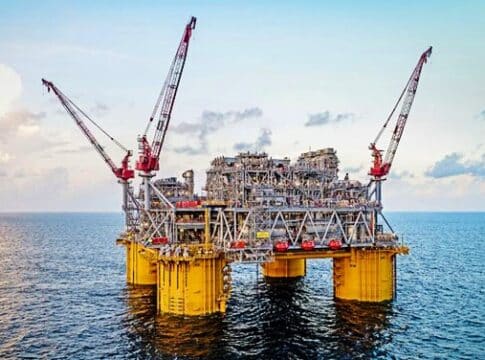Shell’s Billion Dollar Carbon Bill
Shell said that climate change could have adverse effects on its business, particularly on its oil and gas assets and profits, costing the firm around $1.5 billion in annual carbon cost by 2032.
The energy giant noted that the soaring carbon prices in the coming years caused by changing regulations and decarbonization policies will result in uncertainties.
The Risks to Shell’s oil and gas business
Shell stated in its 2022 annual report that the energy transition could have a significant adverse impact on its oil and gas business. The company admitted that its assets, revenues, and operations are at risk because of climate change.
Not to mention the possibility of regulatory matters that may hinder project progression and operations.
As the firm reported, the transition will also possibly make compliance costs go up while restricting the application of hydrocarbons. Shell also stated in the report that:
“The lack of net-zero-aligned global and national policies and frameworks increases the uncertainty around this risk.”
When the Russian invasion of Ukraine in 2022 caused oil and gas prices to spike, Shell earned a huge profit of about $40 billion.
But just like other oil and gas businesses, Shell is under greater pressure from shareholders and environmentalists. On the other corner are investors and regulators focusing more on transitioning to a low-carbon economy.
The energy transition is a must. Those who don’t or can’t adapt will be at the perils of losing billions of investments from climate investors. They need to rethink their business models to align with the transition.
Otherwise, the company noted that in an increasing carbon price scenario, “the risk of stranded assets may also increase”.
Reducing Emissions Steadily
Despite those risks, the energy major was able to cut its absolute carbon emissions in 2022 steadily. That’s mainly because of lower oil product and gas sales and divestments.
Shell follows the Greenhouse Gas Protocol, the global standard in carbon accounting, in reporting its absolute emissions. The Protocol defines each scope as follows:
Scope 1 covers emissions from sources directly controlled by an entity;
Scope 2 includes indirect emissions from bought power, heat, or cooling; and
Scope 3 covers other value chain emissions.
Shell reported that it’s working to reduce both its net carbon intensity and absolute Scope 1 and 2 emissions. It aims to reduce its absolute Scope 1 and 2 emissions by 50% by 2030 and hit net zero by 2050.
As seen in the chart above, Shell aims to cut its net carbon intensity by 20% by 2030. This reduction includes all emissions sources from operations (Scope 1), energy use (Scope 2), and products end-use (Scope 3).
The oil giant managed to reduce emissions intensity in 2022 (76 grams of CO2e/Megajoules) from the 2016 baseline (79 grams of CO2e/Megajoules).
Likewise, the 30% drop in both Scopes 1 and 2 emissions were because of divestments in oil and gas. Conversion and shutdown of existing assets as well as renewable assets purchases also contributed to the reduction.
While the decline in Scope 3 emissions, from 1.30 billion mtCO2e in 2021 down to 1.17 billion mtCO2e in 2022, was due to decrease in oil and gas sales.
The total emissions by the company from all three scopes went down to 1.24 billion metric tons of CO2e in 2022 from 1.64 billion mtCO2e in 2016.
In summary, here are Shell’s climate targets with actual achievements in 2022.
Concerns Over Carbon Prices
Shell expects that the cost it has to pay for carbon will soar in the coming decade.
The company has paid the EU Emissions Trading Scheme (ETS) and other carbon pricing schemes around $493 million in 2022. This year, the forecasted cost is at around $0.8 billion and $1.5 billion in 2032.
The estimate is based on a forecast of the firm’s equity share of emissions from operated and non-operated assets and real-term carbon cost estimates using the mid-price scenario.
Under its mid-price scenario, carbon prices are projected to be at $125/mtCO2e from 2030 onwards. Under a high-price scenario, the cost will be $220/mtCO2e.
Within the decade, carbon costs are primarily driven by policies, either through carbon taxes or emission trading schemes, according to Shell. Both systems vary globally, which makes it difficult for the company as to what specific assumptions to consider in its decisions.
This prompted the oil major to call for further clarity on current carbon pricing mechanisms. They are, after all, critical to setting emissions reduction targets and achieving them.
Carbon prices differ a lot per country and governments worldwide don’t have a single global carbon price to follow.
For instance, the cost of each carbon credit in the EU ETS is about 10x more than that in the China carbon scheme. Last month, EU carbon prices reached record levels passing 100 euros.
Yet, Shell is still opting for carbon credits to offset its hard-to-abate emissions. In 2021, it bought 5.1 million tonnes of carbon credits, and 4.1 million tonnes in 2022.
The post Shell’s Billion Dollar Carbon Bill appeared first on Carbon Credits.



